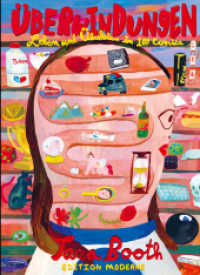- ホーム
- > 洋書
- > 英文書
- > Business / Economics
Full Description
Since the 1950s, union membership and collective bargaining in the United States have declined. Union density, the percentage of the workforce belonging to unions, peaked at 34.8% in 1954 and fell steadily thereafter. The most recent Bureau of Labor Statistics' report on union membership indicated that, in 2021, union density was 10.3%. Union density in the private sector workforce was reported to be 6.1% (lower than it was in 1890). In absolute numbers, total union membership stood at 14 million, down from 21 million in 1979.
Union decline over the past 50 years is due to a number of factors that have negatively reinforced each other. Notable factors include structural shifts in the economy, employer opposition, weak labor laws, legislation that has substituted for union protection, the growth of human resources, and the inability of unions to respond to institutional threats with new and successful organizing and political strategies. But a number of contemporary developments suggest a revival of interest in unions. Before COVID, workers experienced less input than they expected and desired. Because unions are the main mechanism for providing workers with a greater voice in the workplace, this voice gap provides an opportunity for union growth.
The voice and representation gap is evident in the many organizing drives taking place in previously unorganized sectors, such as fast food, retail, warehouses, high tech, and digital media. Unions, union organizing, and collective bargaining may finally see a change in fortune after decades of stagnation and decline.
Contributors:
Jai Abrams, Yale University; Jacob Apkarian, York College; Ariel Avgar, Cornell University; James N. Baron, Yale University; Dale Belman, Michigan State University; Michael H. Belzer, Wayne State University; Timothy Chandler, Louisiana State University; Clifford B. Donn, Le Moyne College; Adrienne E. Eaton, Rutgers University; Mark Erlich, New England Regional Council of Carpenters; Rafael Gely, University of Missouri; Ray Gibney, Penn State Harrisburg in 2007; Rebecca K. Givan, Rutgers University; Frank Goeddeke, Jr., Wayne State University; William A. Herbert, Hunter College and National Center for the Study of Collective Bargaining in Higher Education and the Professions; Daniel J. Julius, Case Western Reserve University, Rutgers University, and Yale University; Brenda J. Kirby, Le Moyne College; David Lewin, UCLA Anderson Graduate School of Management; Adam Seth Litwin, Cornell University; Marick F. Masters, Wayne State University; Michael Schuster, Syracuse University; Joseph van der Naald, University of New York Graduate Center; Tingting Zhang, University of Illinois Urbana-Champaign.







